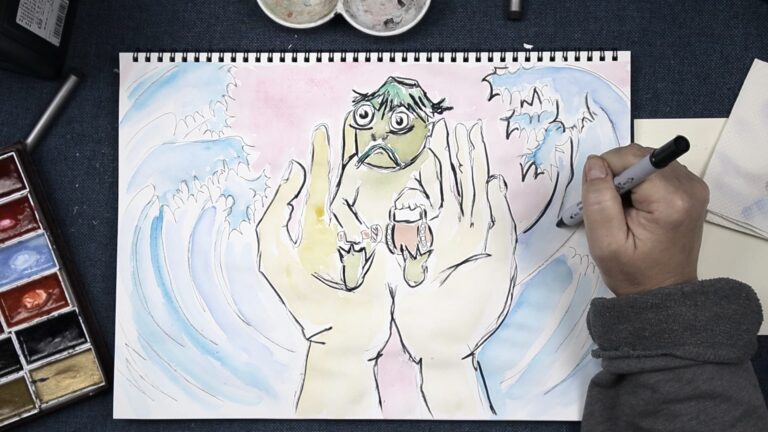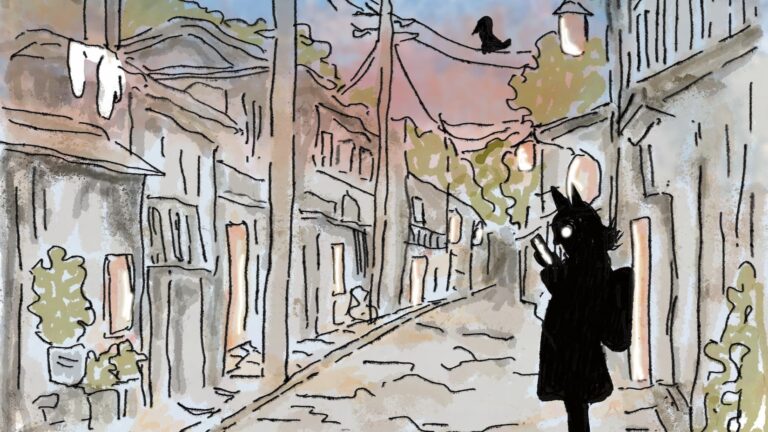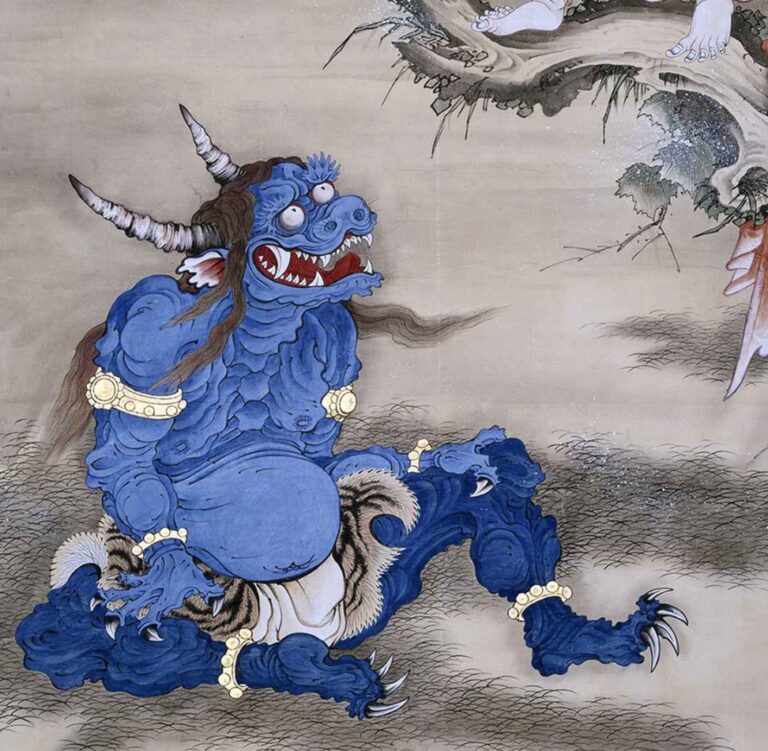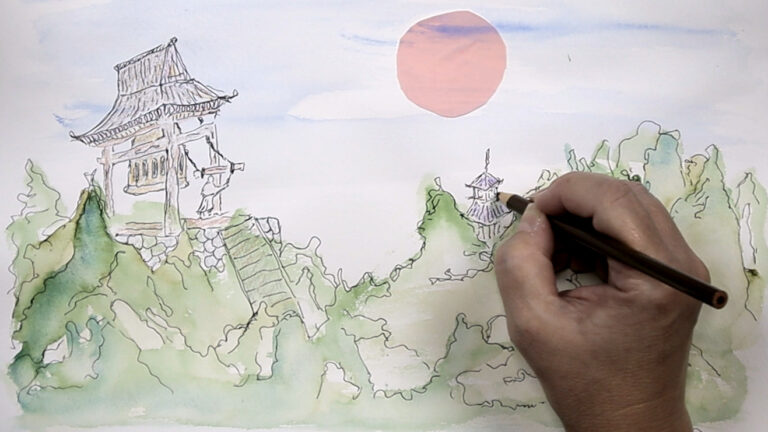The devils are coming! Or the ogres or demons, depending on how you translate the Japanese word oni (鬼). February 3rd is Setsubun in Japan and it’s not just the day before spring according to the lunar calendar, it’s also the day that oni prowl the streets and children must pelt them roasted soybeans to insure good luck for the coming year. In this episode of Uncanny Japan, I talk about Setsubun and the various ways it’s celebrated.

Eho-maki Sushi for Good Luck!
Uncanny Japan is author me, Thersa Matsuura, exploring all that is weird from Japan. Strange superstitions and old wives tales, cultural oddities and interesting language quirks. These are little treasures I dig up while doing research for my writing, and I want to share them with you here on Uncanny Japan. I hope you like the show.
Hey hey everyone. The devils are coming. Or depending on how you translate the word oni, the ogres or demons are coming. They’re coming on February 3rd and they come every year. At least here in Japan they do.
Let me tell you more. Let me tell you about setsubun. It literally means the division between seasons. It’s the day before the beginning of spring if you follow the lunar calendar, and while the lunar calendar moves around a lot in real life, these days in Japan the date is fixed on February 3rd. Here’s how I first learned about setsubun. Baptism by fire of sorts.
Somehow during my first two years as an exchange student here and my first couple of years of marriage, I had managed not to avoid setsubun, but not really to run across the various ways it was celebrated. I knew something about spreading beans around and that was about it.
So it happened one night when my son Julyan was about 3 or 4 years old and we were living in this old house in this old neighborhood full of old people in their old traditions. It was dark out, 7 or 8, and my husband was still at work and wouldn’t be home any time soon. So Julyan and I were getting ready for bed when we heard some ruckus outside, down the street. Lots of shouts, yelling, specifically men’s voices. It stopped for a while and then it started up again, closer. It stopped and it started up again, this time though, it sounded like it was our neighbor’s house, and on top of that I heard a child screaming too. Julyan and I were both intrigued and freaked out at the same time.
No cell phones back then so we just listened and tried to figure out what we were going to do. Then our doorbell rings. We gasp, wait, we can tell there are people out there, more than one, because we can hear them shuffling around.
The doorbell rings again. My plan was to wait it out, when I remember that in this old neighborhood no one keeps their doors locked, not even us. If someone comes over–a friend, a mail carrier, a salesman–they ring the bell, they open the door, and announce their presence.
“Shitsurei-shimasu,” or, “Konnichiwa,” if they don’t know you. And if they do know you they call out your name. Sure enough, the front door slides open and a man’s voice calls me by my last name. Okay, so this person knows me, and the voice sounds vaguely familiar but I can’t place it. He calls out again. Shuffling from the others, heavy breathing. My curiosity got the best of me so I sneaked down the hall and I look around the corner. There, standing in my foyer was a man wearing flowing robes, a very cheap looking white wig and taped-on long white beard.
There, crowded all around him are five ogre onis, head-to-toe in blue or red. Blue or red tights, big, baggy tiger-printed shorts, tight shirts that have been stuffed to look as if they had muscles, long wild messed up hair, again in bright red or blue, horns, and blue or red faces painted to make them look angry. Oh, and they were brandishing clubs as well. Julyan, disobeying my stay back and save yourself order, peeks around my leg and they oni see him and they begin growling and shouting and jumping around, demanding to know if he’s a good boy or not.
Now, there is a way this is supposed to go and I didn’t know it at the time, so in my story there’s a lot of awkward pausing, breaking character, and explanations by both the god of good fortune and egregious onis, coaxing me on what to do. Also supplying me with the appropriate roasted soybeans that I didn’t have on hand, but we needed to fend off the beasts.
The way it was supposed to go, the way all my neighbors were doing it was, they come in, oni shouting and making a fuss, asking the children, “Have you been a good boy or girl?” Adding that if not, the oni will come and carry them away.
You can imagine a small child’s response, somewhere between the tears and sobs, or in Julyan’s case, surprise and giggles because ours were dressed pretty cheaply. The child promises he or she has indeed been a good boy or girl, or will from now on. Then you empower the kid. You give them a handful of pre-roasted soybeans that they bean the devil’s with, calling out, “Oni wa soto!” Devils outside. The men dressed up as oni make a big deal about this, jumping around and screeching, pretending the beans really hurt when they get hit.
Eventually they flee to the next house. The man who was dressed as what I’m guessing now was one of the shichi-fukujin, seven gods of good luck that I talked about last episode, calmly takes his stash of beans that he’s been carrying in a small wooden box and tosses them into the house and on us, saying, “Fuku wa uchi,” or good luck inside. He then gives the kids and Julyan some candy, and it’s all pretty awesome. Julyan I loved setsubun in that old house and we were a little sad when we moved away to a new neighborhood that didn’t do setsubun like that at all.
I don’t know about everywhere in Japan, but usually setsubun is observed by buying a plastic oni mask, red or blue, sometimes green, and some beans at the supermarket. And then on the night of February 3rd, one person in the family is chosen to act as the oni. They put on the mask, go outside, then come back in and the family pelts them with beans saying, “Oni wa soto!” Ogres outside. Then some beans are also chucked inside the house. “Fuku wa uchi!” Good luck inside. On the day after setsubun I always like going for a walk and seeing all the beans strewn about on the streets in front of houses.
Other ways setsubun is celebrated is at the local Shinto shrine or temple events. Our local shrine had a giant board with a fierce oni painted on it. Priests would come out in fancy garb and long bows and shoot it with arrows while everyone watched. After that, the audience would gather around this raised platform and a bunch of people, and I’m guessing their shrine people, would come out and start throwing little packets of dried beans into the crowd.
Everyone goes nuts trying to collect as many as they can. The reason for the excitement is because when you open the packet, there are beans inside, which you can eat of course, they’re not very tasty, but in certain packages you can get a little piece of paper with a number written on it. When the whole event is over, you can take that little slip of paper or papers to a side stand, and depending on the number you can get candy, treats, canned tuna, detergent, soap, fish cakes, all kinds of cool stuff.
A funny aside is that this is an event pretty much for children, right? But because adults were getting too rough trying to grab all the packages flying around and knocking kids over and stuff, they had to make two stands, one just for children and one for adults.
Okay, let me talk about a couple more interesting setsubun traditions. The first is something that wasn’t a thing at all when I first moved to Japan but kind of became huge in the last couple years, and I’m thinking that’s because of the internet and probably aggressive marketing by supermarkets and convenience stores. It’s called ehomaki. Ehomaki is from the Kansai region of Japan–think Osaka, Kyoto, Kobe–but I believe now that you can pretty much find it anywhere in Japan, all the way up to Hokkaido, maybe probably even down to Okinawa.
It’s kind of amazing how this thing has appeared just like out of nowhere and now, come setsubun you can find ehomaki being advertised for preorder and sold everywhere the day of.
What is an ehomaki? Imagine a futomaki, or rolled Sushi, a big fat one that’s long too, and it’s filled with seven ingredients. Actually, any ingredient, even one like deep fried pork cutlet cut into strips and rolled into rice is fine, but having seven ingredients is considered extra lucky. One ingredient for each of the seven lucky gods, the shichi fukujin, which again I talked about last episode. So what do you do with this ehomaki you’ve just bought? Why, you eat it of course, but you must eat the entire giant rolled sushi whole, you don’t cut it, one bite at a time in complete silence, while facing a certain direction. The direction changes each year and usually it’s TV or something that will let you know which direction it is that year. While you’re doing that, absolutely quiet, not talking to anybody, eating slowly, you make wishes for your health or happiness or some other good fortune, something you’d like.
I’ve been a bit overwhelmed with how many and how many different kinds of ehomaki are sold every year. It’s like we don’t have enough people in our town to buy all these. But I guess they get sold. Something I thought was funny and clever though was a few years ago I caught the little cake shops selling rolled cakes filled with cream for the same purpose. Other than not being ehomaki or even sushi for that matter, they are shaped the same so, why not.
A second custom that I stumbled across pre-internet, and it freaked me out a little, is quite old but I think you’ll agree it is a bit surprising to run across all the sudden. Some families in different parts of Japan will skewer a burnt sardine head on a holly branch, often piercing it through the eye of the fish and place that on their front gate as a talisman against onis or bad luck. It’s called hiragi-iwashi, holly sardine, and looks like the tradition is so old that it’s difficult for anyone to pinpoint a time when it first appeared. The reason it’s said to work is that oni hate the strong smell of sardines. Some people even eat sardines on February 3rd as an extra precaution to keep the oni or the devils or the ogres away. Also, the prickly leaves of the holly bush are thought to scare oni, because they don’t want to get their eyes poked out.
So there you have it, a little bit about setsubun. You can dig deeper and find a whole lot more, but I think that covers all the big bases. Speaking of dried soybeans, when you go into your local supermarket in Japan and you pick up the mask and the beans, you’ll also find some tasty sweetened beans sold alongside them. Eating these on setsubun, especially eating the number that is the same as how old you are, is also thought to be really good luck. This month for my tengu, and ironically enough, oni patrons, I sent an envelope with a mask, either red or green, nobody knows until they open it, some dried beans for throwing and then some more, some of the delicious variety for eating. You know, I’m not saying that you have to don the mask and frighten your family on the night of February 3rd, but… at least you can nibble some of the sweetened soybeans and make some New Year’s wishes.
Thank you all for listening and I will talk to you again really soon. Bye bye.
Pssst! Hey, do you like scary stories? Or maybe you don’t do full-on horror, but enjoy a nice dark tale. Something creepy involving Japanese folklore and superstition. Well, if that’s the case, you can sneak on over to Amazon or wherever you like to buy books and look for my two short story collections: A Robe of Feathers and The Carp-Faced Boy. All you need to do is search for Theresa Matsuura. Let me spell that for you. T-H-E-R-S-A, M-A-T-S-U-U-R-A. Another place you can find me doing things is on Patreon. There, once a month for my five dollar and up patrons, I translate, retell and record obscure Japanese folktales. Some are dark, some are humorous, some are just weird. And lastly, another super sweet thing you can do is to write a review on iTunes. By doing this you help like minded people find Uncanny Japan. It’s a little thing but it means a lot and it’s a great big help. Thank you, I’m Thersa Matsuura, and I’ll talk to you soon.
(Transcribed using Happy Scribe)
Credits
Intro and outro music by Julyan Ray Matsuura







I recently stumbled upon your podcast as I was looking for Japan-related podcasts. Your podcasts are well made and always a joy to listen to. It’s great that I get to learn about Japan and am able to relax at the same time. Looking forward to more episodes. =)
Jack, thank you so much for listening and commenting. I’m aiming for two a month in 2019, working on the next one now. Very glad to have you along for the ride.
The superstition about eating eho-maki in silence and making a wish: I’ve heard something similar about the mince pies we eat at Christmas in the UK (not sure they exist anywhere else) – eat a mince pie in silence and you’ll have one happy month in the coming year.
PS Setsubun is my favourite Japanese festival. We always threw beans when my kids were small – not sure what my neighbours here in the UK made of it!
I had never heard that before about eating mince pies in silence. Thank you for sharing! And I love that you did the bean throwing there! Oni wa soto!